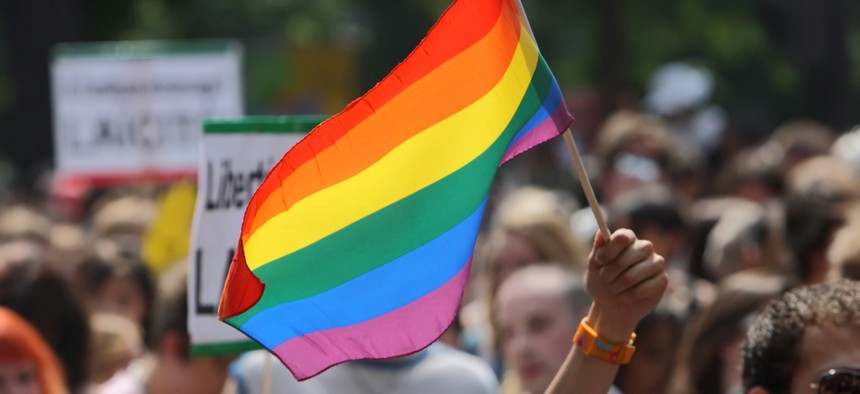Trump Will Keep Obama’s Workplace Protections For Gay and Transgender People
It protects the roughly 28 million people who work for federal contractors.
While most minority groups are hunkered down, waiting for the next salvo from the White House, the LGBTQ community can breathe a sigh of relief, at least for now.
The White House put out a brief statement today saying US president Donald Trump will uphold a 2014 executive order, signed by Barack Obama, that extends workplace protections to gays and lesbians who work for federal contractors.
The announcement resolved—at least temporarily—a potential conflict between Trump’s generally benign attitude toward the LGBTQ community, the positions of his lieutenants, and his avowed aversion to government regulation.
Trump, in his acceptance speech for the presidential nomination, said he would champion LGBTQ rights, and has attended the marriages (paywall) of gay friends. Yet as president, he has surrounded himself with officials who have tried to block or roll back protections for gays, including vice president Mike Pence. Trump is also an avowed enemy of government regulation, and yesterday signed an order requiring agencies eliminate two rules for every new one introduced.
Obama used the Department of Labor’s authority over the employment practices of federal contractors to advance protections for workers on a number of fronts. That included extending protections to gay and transgender workers, requiring employers to provide sick leave, and suing tech and finance firms to enforce equal treatment of women and minorities.
“Under the Obama administration, the game had changed significantly,” said Christopher Durham, an employment lawyer, who said he expected the Labor Department under Trump to more closely resemble that of the George W. Bush administration, which took a less confrontational stance with employers.
The executive order barring LGBTQ discrimination exempts religious organizations, which can discriminate for religious positions, but not other jobs. It covers roughly 28 million people who work for federal contractors.



